The City Will Not Become Better On Its Own
On selected public space civil intiatives in Zagreb since independence of Croatia
Text by Saša Šimpraga
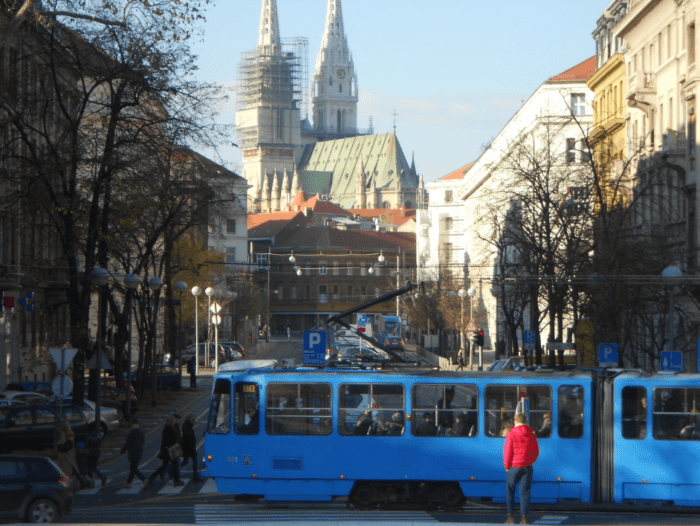
The transformation of Zagreb that followed the change of the political system with the disintegration of Yugoslavia only further confirmed the thesis that there are two constants in the existence of (every) city: namely that change to the city is immanent, and that urbanity is a matter of continuity. With the disintegration of Yugoslavia, a war took place in Croatia that burdened society not only during its duration, but also in the decades after it ended. The presence and dominance of war themes in public life, even when the war was over, conditioned the relatively late emergence of struggles for commons, which took on a kind of public right only after the death of autocratic president Franjo Tudjman and the fall of his kleptocratic regime in 2000, ie. democratization of the country, which in 2013 became a member of the European Union. In the capital city, these are struggles initiated by civic initiatives and non-governmental organizations, and they have a common commitment to the public interest. They manifested themselves in a series of attempts to defend public spaces and preserve commons, and consequently to a certain extent contributed to the sensitization of society to the topics they advocate. The outcomes of these struggles were different, some of them still ongoing, but what they have in common is that they had a certain impact on society. Some of them grew from from local, neighborhood frameworks, into important political issues and their actors became recognizable as advocates and defenders of the right to the city but also of the democratic process itself.
Travno My Hood – the beginning of the struggle for public goods in Zagreb
The symbolic place of the beginning of the struggle for public space and resistance to exploitative policies in transitional Zagreb was marked by the informal civic initiative named “Travno My Hood”, initiated in 2006 and led by the resident of that neighborhood in New Zagreb and a writer Svjetlana Lugar. Under the slogan “Church Yes, Not in the Park”, the “Travno My Hood” initiative opposed the construction of a church complex in the part of the central park in that planned and successfully defined settlement from 1970s. In order to understand the size and position of the park and the largest building in Zagreb and Croatia next to it, it is crucial to consider their relationship – one hat balances the demand for many residential squares with that for enough free space in the park, which in turn requires the defense of its urbanism. From the beginning, the initiative advocated the preservation of the total of the existing park, and did not oppose the construction of a church complex on one of the alternative locations within the settlement that are intended for construction. The media exposure of the struggle has put a small neighborhood initiative into the public spotlight, later to be joined by some of the NGOs, such as Green Action, one of the most important environmental organizations in Croatia, which will later become one of the most committed NGOs on governance of public space in Zagreb, but also elsewhere. The “Travno My Hood” initiative failed to prevent the construction of a church and ancillary facilities in the public park area, which was subsequently partly and permanently devastated, along with views that existed before the church was built, but, as time will show, also encouraged the beginning of the awakening of civil initiatives aimed at the public space of Zagreb.
Green Action and the Right to the City: The Warsaw Street Case
The struggle that marked a reversal and bigger resistance to harmful institutional policies is related to the construction of the Centar Cvjetni commercial and residential complex, inside a block by one of the squares in the center of Zagreb, namely Flower Square (Cvjetni trg). In addition to increasing the coefficient of construction, the project is also characterized by the appropriation of part of the nearby Warsaw Street for the construction of an entrance-exit ramp for an underground garage in a new private shopping and housing center. After years of protest, the center was finally opened in 2011, part of Varšavska Street permanently usurped for a private garage, which also attracts significant additional traffic to the city center. However, what this initiative led by two organizations, Green Action and Right to the City, managed, is to stop such future projects by amending the General Master Plan, ie by setting up a civil initiative as a significant actor in the fight to preserve comons, primarily by mass protests and by imposing the topic of usurpation of the public good in the focus of the public. This very struggle will also become the basis for some later struggles in other parts of the country, such as successfully resisting highway concessions or launching the “Srđ je naš” initiative in Dubrovnik, which fought against the construction of golf course and tourist facilities on Srđ Hill nature area above the city. All these struggles resulted in the establishment of political organizations, the politcal party “Zgareb je naš” (Zagreb is ours) at the city level, and “Možemo” (We Can) platform at the Republic level, which will enter the Zagreb City Assembly following the local elections in 2017, and in 2020 the Parliament.


1POSTOZAGRAD (1 percent for the city)
As an informal civic initiative, 1POSTOZAGRAD has a focus on public space and commons, while covering the entire area of Zagreb, mostly with small initiatives. One of the first initiatives was for a new public park on Zagreb’s Green Horseshoe. The Green Horseshoe is a sequence of park squares connected in the shape of a horseshoe created at the turn of the 19th and 20th centuries. It forms an important part of the identity of the Croatian capital. The initiative aimed at the area where for a good part of the 20th century there were barracks that served the Red Cross for the longest period, accommodating the homeless. Since the construction of new accommodation for this purpose, the space and facilities have been abandoned. At that time, the city administration has launched a plan to turn the abandoned plot into a public parking lot, while parallel civic initiative proposed a public park for the location – which was not a new idea for the location. The broad campaign ultimately resulted in the opening of the public park in 2013. Although the park was not designed on the basis of a public tender as proposed by the intiative, the space was nevertheless turned into a park for the first time ever, giving the Green Horseshoe its ninth public park more than a hundred years after its completion. The move also resulted in forming a new green system as it finally connected all the green areas of the Green Hoseshoe.
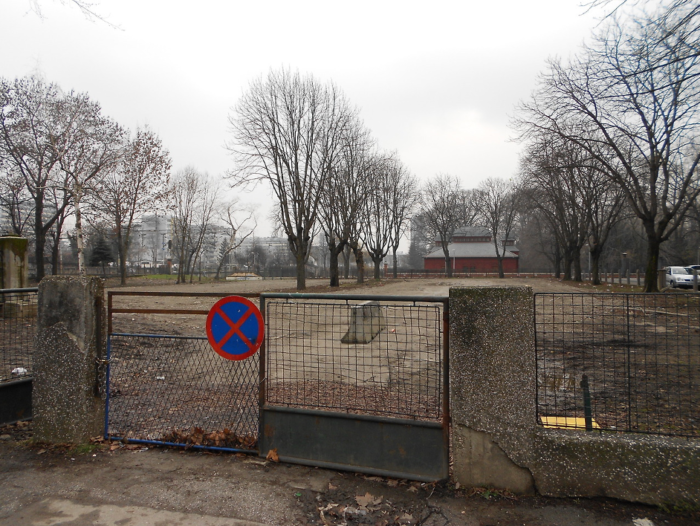
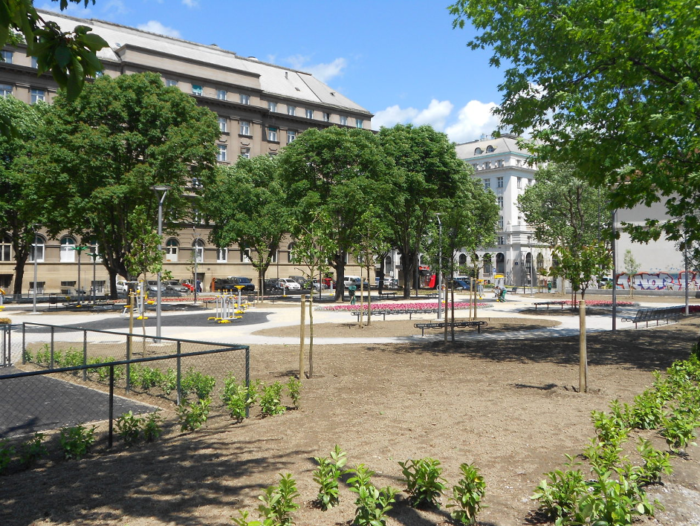
New network of public drinking fountains
As part of this new park campaign, the initiative also advocated the establishment of a free drinking water fountain, which also happened. Following that intiative, in 2016, 1POSTOZAGRAD, in cooperation with several other actors, launched an initiative for a new network of free drinking fountains for the city of Zagreb. The initiative aimed to stop the removal of such existing fountains, ie the establishment of a completely new network, which started in 2017 by installing the first 20 fountains in some of the busiest locations in the city where there was a need for free drinking water. This struggle for water as a public good was materialized here in the struggle for each individual public drinking fountain and the fact that Zagreb, thanks to the civic initiative that initiated the request, entered the process of building a new network of public drinking water fountains as a communal, public health norm, at the same time (re)affirming water as a commons, but also as a human right.

Concession of neighborhood playgrounds
Concessionaire of neighborhood sports fields is a practice that was introduced in Zagreb during the transition period and which has been going on and was on the rise without significant resistance over the years. In 2019, the Zagreb city administration announced a public tender for five more such concessions, but for the first time it encountered resistance that was both activist and institutional. The 1POSTOZAGRAD platform focused the fight on one playground, the one in Barutanski breg Street, which consists of a basketball court and a children’s playground. Following a civic initiative oposing the concessions of the the public playground, the demand found the unanimous support of all political parties at the local level, including the mayor’s own party, that is, the city administration pushing for concessions. The political parties of the opposition at the Zagreb City Assembly, which managed the case institutionally, played a key role further action. In the end, the City withdrew from the announced tender, and in the case of the playground on Barutanski breg, the concessionaire himself, to whom the playground had already been allocated, gave up. The civil revolt in favor of the public good proved crucial for keeping the playground in free use and it continued to be public and accessible to all free of charge.
This case drew attention to the problem and in this particular case managed to prevent the de facto privatization of commons, ie to cancel the tender for other concessions, and probably to stop the future ones as well. But the problem remains with all those public playgrounds whose concessions are already underway, thuss that represents some future struggle.
Parkticipacija: a network of community gardens
The initiative to establish a network of community gardens was launched in 2012 by a group of civic initiatives and associations, and came to life under the unique name of Parkticipation. Urban gardening is a Zagreb tradition, but it has never been regulated. The initiative, prompted by the demolition of a small part of unregulated gardens, ultimately succeeded not only in encouraging the city authorities to establish a network of city gardens in 2013, in which anyone can get a plot under certain conditions, but also encouraged similar initiatives in a number of cities in Croatia which consequently also got their city communal gardens.
Park for Kajzerica (neighborhood)
Today, the Sava River passes approximately through the geographical center of Zagreb, but the city on its southern side did not occur until the second half of the 20th century. Planned Novi Zagreb consists of a series of settlements connected by an orthogonal network of streets that intersect mega blocks, each of which has its own urbanism. The development of urban planning of New Zagreb also illustrates the evolution of urban planning, which locally reached it’s peak in the late 1980s with the construction of settlements such as Dugave and Sloboština. In that river crossing, one point was skipped, and that is the settlement of Kajzerica which is located right next to the river and is the oldest settlement on the south side of the Sava. In the 20th century, Kajzerica is characterized by the unplanned construction of mostly substandard individual family houses. The fact that the settlement existed before the big planned breakthrough, conditioned that it was waiting it’s turn for consolidation and reurbanization as a modern neighborhood, but it did not happen. Due to the disintegration of the country, urban planning collapsed, so Kajzerica with it’s narrow streets was left to investor urbanism, which today characterizes the newly formed settlement. No public parks are planned in the process, and the only free green space has been reserved for decades to build a school. The school was then built on an alternative location, and the meadow became a target. First came a request to build a church, and later a store of a retail chain. In 2015, five civil society organizations launched an initiative to preserve this green area and turn it into a public park, ie to design and arrange it according to the needs and wishes of the local community. The initiative is characterized by broad public and professional support. An additional problem is the fact that the subject area is not entirely in public ownership, so it is necessary to purchase the remaining private plots before arranging the park. While this process has not marked any progress to date, some have been achieved in the partial arrangement of the park and the general development of public awareness that this space is now reserved for the future large park that the neighborhood lacks.
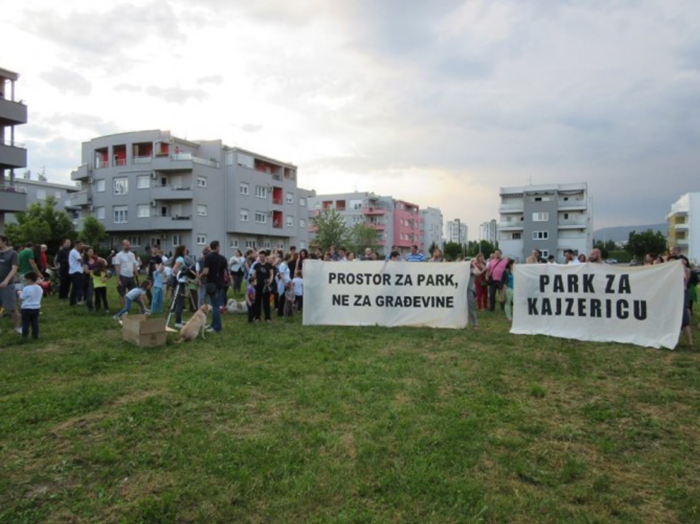
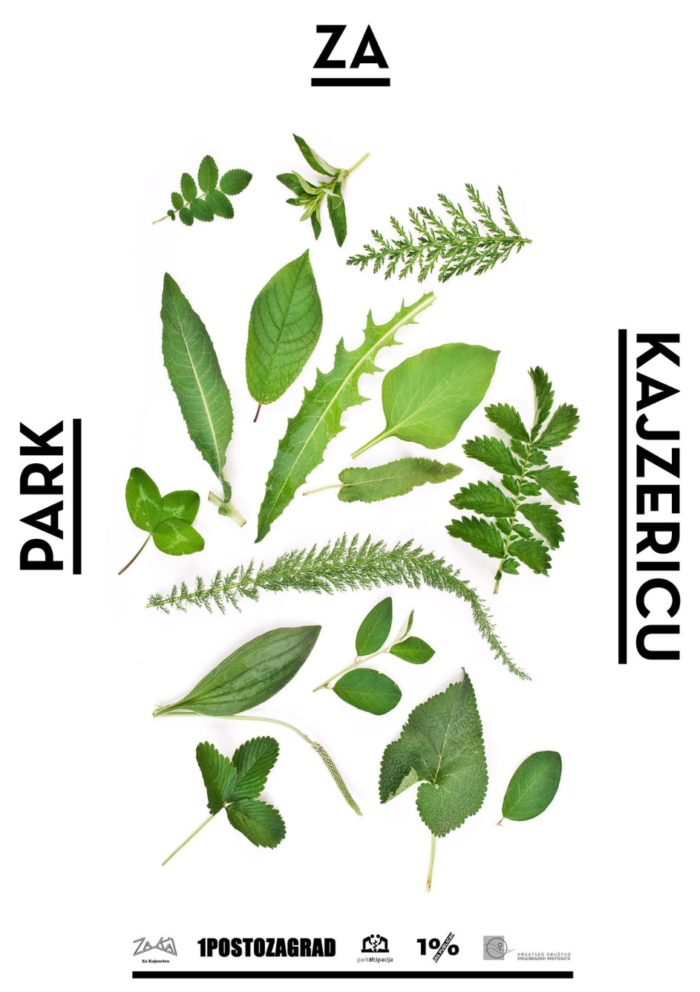
Savica (neighborhood) for the Park
The modernist settlement of Savica is characterized by apartment buildings, and in its center there is a larger neighborhood park. The intention of the city administration and the Catholic Church to build a church complex on the free surface of the park, like in the Travno settlement and elsewhere, met with resistance from the residents of the neighborhood. The choice of the location of the park for church construction was guided by double logic. On the one hand, for the City Administration and the Church, that would not represent the cost of land, and on the other hand, in this particular case, it was also a matter of controversial land replacements. The organization and strength of the civil initiative “Savica for the Park” launched in 2013, which after years of struggle finally managed to defend the park. Although the park has been preserved, the problem has not been fully resolved since the city administration, after abandoning the park, simply moved the plan to build a church complex to a location that had been reserved for a sports and recreation center for decades in the General Master Plan. Moreover, for this sports content, an architectural tender has already been conducted and a proposal to be built has been selected. However, the construction did not take place, which opened an empty space for embezzlement by the city administration, ie by those who conducted the tender and who are nominally obliged to defend the public interest.

Road against stream, streets against parks
Several informal civic initiatives and associations have engaged in stopping the construction of planned roads on long-guarded routes that have since been used as green spaces. Their starting points and arguments are different. For example, the “Save the Črnomerec Stream” initiative is guided by progressive understandings that the stream is more valuable than the road and that it needs to be preserved, among other things in the light of the fight against climate change. What all these initiatives have in common is that they have imposed the right of the public to participate in decisions that directly affect them, but also opened up alternatives to urban development considerations that unilaterally favor infrastructure such as roads and neglect green ones such as parks. One of these initiatives, the one that opposed the extension of Stonska Street, managed to keep the park since the road extension was not necessary and the neighborhood was deficient in parks, but other struggles, such as those in Trešnjevka and Trnsko, are uncertain.
Manhattan of Zagreb
The case, which marked the culmination of otherwise location-fragmented struggles for public goods, is known as Zagreb’s Manhattan, as the current mayor informally called the project of reurbanization of large areas along the Sava River. In short, following the example of the controversial Belgrade on Water project in the Serbian capital, and by the same investor, the Zagreb city administration in 2019. planned to leave the central space along the Sava River, including the Zagreb Fair, for new construction. The model applied by the city administration actually comes down to the fact that due to construction, ie in exchange for public goods, the majority of the ownership structure of public land is handed over to investors, while at the same time all risks remain with the public administration. In doing so, procedures were circumvented and controversial changes of the City Master Plan were initiated, which represent a favor to investors and a case of exploitation of publicly owned space for private benefit. Opposition to the project, and then several times more harmful changes to the Master Plan, united civic initiatives and all relevant professional societies in demanding that the city not be destroyed under the pretext of progress and construction. Mostly thanks to this revolt, which became a first-class political topic in the country, the intention was finally abandoned, and the changes to the Master Plan were put on hold, so that fight is yet to come.
Conclusion
The mentioned initiatives were not only initiatives for public spaces, but above all requirements for responsible governing of the city and its commons. The transformations that the struggles advocate are aimed at preserving or improving the general standard, while also safeguarding and building urbanity as a collective value. It is no less important that these struggles have stimulated a number of other, smaller, micro-local, initiatives that have in common that they defend the public interest. Almost as a rule, it is about defending public spaces from inappropriate construction and preserving green and water areas. When they succeeded, these struggles and their shifts in the defense of public goods, ie the processes initiated by civic initiatives, succeeded mostly thanks to this civic engagement, and (only) then thanks to the support of institutional political actors who recognized some of these initiatives as public interests to be supported. At the same time, every unsuccessful initiative, the one that has not yet succeeded, is in fact the foundation of the one that may one day succeed. Successful or not, they are also a repeated confirmation of the thesis about the city in transformation, the culture that conditions it and the fact that the city will not become better than on its own.
Saša Šimpraga is an activist and publicist from Zagreb. He is the author of the book “Zagreb, Public Space” and the editor of several books in the field of architecture and art. He is the founder and head of the 1POSTOZAGRAD (1 percent for the city) volounteer platform.